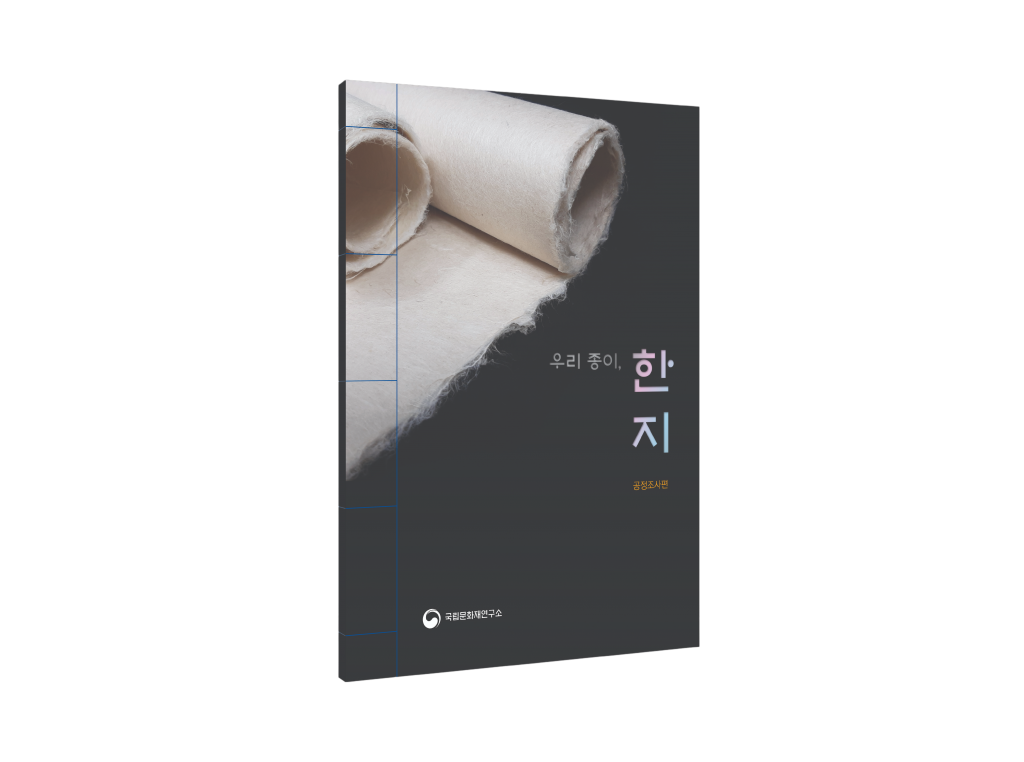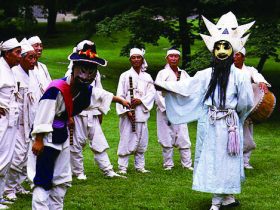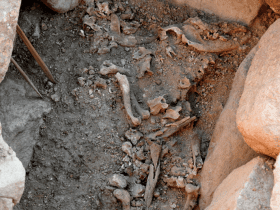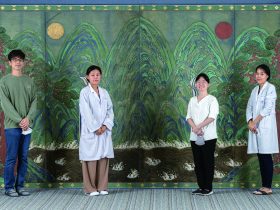Hanji (traditional Korean paper) used for restoration of cultural heritage
Restoration Technology Division
JEONG Seonhwa
Traditional Korean paper, Hanji
The excellence of Korean Hanji was proven by the Mugujeonggwang Daedaranigyeong (Great Dharani Sutra of Immaculate and Pure Light), discovered in Three-story Stone Pagoda of Bulguksa Temple, Gyeongju, Gyeongsangbuk-do Province, in 1966. The sutra, designated as National Treasure, is known as the world’s oldest woodblock print. It is estimated to be printed before 751 during the Unified Silla Kingdom (668–935), which is approximately 1,200 years ago, verifying the long-lasting quality of Hanji.
According to the Standard Korean Language Dictionary, Hanji is defined as paper made with Korea’s unique manufacturing technique using fiber from paper mulberry. Our ancestors made good use of the various properties of materials to make traditional Hanji. They collected skins of Korean native paper mulberry in late autumn and cooked them with natural alkaline solution lye water and used hibiscus manihot root mucilage as a dispersing agent.
Hanji can be largely divided into “traditional Hanji” and “improved Hanji.” Traditional Hanji is produced with fiber from the bark of Korean paper mulberry, cooked with natural lye water made by ashes from burning Yukjae (sesame stem, rice straw stem, buckwheat stem, cotton stalk, pepper stem and beanstalk). Then it is washed and naturally bleached by sunlight, running water and snow and mixed with hibiscus manihot root mucilage in “jitong” case. The fibers are strained and refined for each sheet of handmade paper. The production method and equipment have evolved and improved as times have changed. Nevertheless, traditional Hanji sheets are made smooth and even by hand, keeping the characteristics of long, resilient fibers of Korean paper mulberry. Heullim tteugi is the technique which makes the fibers to flow naturally within the sheet and after the fibers are drafted, the paper goes through dehydrating and drying. The surface of the paper can be further smoothed by pounding with a mallet. Modified Hanji is distinguished from traditional Hanji as it is made by mixing different fibers and imported paper mulberry trees. Chemical cooking liquors such as sodium hydroxide (caustic soda, NaOH) and sodium carbonate (soda ash, Na2CO3) are used and Polyacrylamide (PAM) is used as a dispersant. Sodium Hypochlorite bleaches the paper and knife beater machines cuts the fibers short to make them even. The sheet of paper is drafted in a way which the orientation of the fibers is fixed. After dehydrating, the paper is dried on a hot plate. Such modified methods contribute to the even formation and brightness of Hanji, but compromises its durability, making it less suitable for keeping for a long time.
Scientific analysis to verify traditional materials for cultural heritage
There are many cultural heritage in Korea along with the country’s long history. According to the Cultural Heritage Pro-tection Act, “cultural heritage” refers to heritage of outstanding historic, artistic, academic or scenic value, which includes Tangible Cultural Heritage including National Treasure and Treasure, Intangible Cultural Heritage, Folklore Cultural Heritage, Natural Monument, Historic Site and Scenic Site. Among them, Hanji is a major material for paper cultural heritage including documents and paintings, which falls into the category of Movable Cultural Heritage under Tangible Cultural Heritage. The paper cultural heritage of organic material is often harmed by diverse artificial, physical and environmental damage factors. When the damage is serious enough to harm the original status, the paper artifact goes through conservation treatment. Scientific research and analysis on the material of the original determines the restoration material. The scientific study is conducted in a non-destructive way to retain the original condition.
Before the scientific analysis, a preliminary survey is conducted to observe the overall conservation status of the object such as shape, size and damage condition, taking photographs and documenting the details. Scientific analysis on paper includes material investigation and structural and component analysis, which measures thickness of the original paper, the intervals of stitches and the number of strips in screen marks, chromaticity (L, a, b*) and acidity (pH). Then other scientific analyses such as identification of fiber, scanning electron microscope (SEM), Fourier transform infrared spectroscopy (FT-IR) and X-ray diffraction (XRD) are also conducted on the paper object to find the Hanji in similar quality to use for restoration.
NRICH ordered and produced Hanji for repair and restoration with specific settings on materials and processes, in order to test and analyze the ingredients and manufacturing processes of Hanji. To evaluate the quality, the optical, physical, chemical, structural and biological properties of Hanji are analyzed and artificial accelerated deterioration test in dry, wet and high temperature conditions are conducted.
NRICH published Korean Paper Hanji – Production Process Research in 2020, compiling the result of study on the manufacturing process of Hanji suitable for repairing and restoring cultural heritage. There is a Korean saying “Silk lasts 500 years, but Hanji lasts 1,000 years” and the research result showcases durability and scientific credibility of Hanji, which could increase the use of Hanji in repair and restoration of cultural heritage inside and outside Korea.


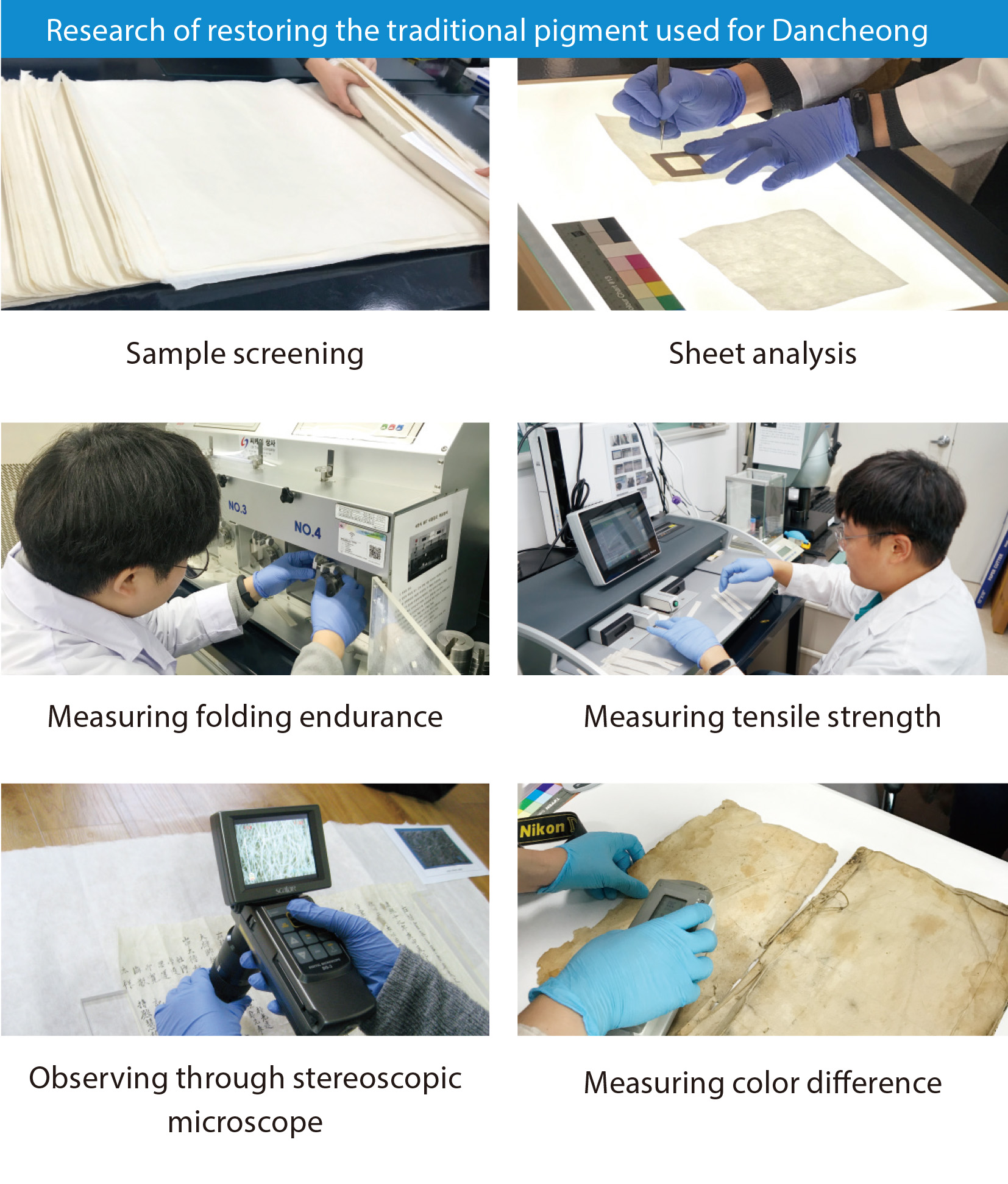

How far will you allow applying Hanji in the restoration and conservation of cultural heritage?
Hanji can be used in conserving paper heritage such as books, documents and paintings. In the conservation of books, the book is divided into cover, end paper and text block and damaged parts go through treatments such as replacing missing parts, applying anti-bending reinforcement for wrinkled and bent parts, adding backing layers to support the original artifact, mounting of scroll and album and making a replica.
Hanji for repair and conservation is chosen based on the needed use and objective of the conservation treatment. The most important element to consider for the paper to be used in restoration is its stability and preservability. Traditional Hanji is the most utilized material for restoration as it is made from Korean paper mulberry bast fiber and hibiscus manihot root mucilage, which are natural materials similar to the material of already existing cultural heritage. Based on expert advice and consultation, traditional Hanji-making materials are used, but both traditional and modified methods are used in beating, sheet-making and drying processes to improve formation of paper. To make Hanji used for preserving cultural heritage, we strictly control traditional materials, but employ modified manufacturing techniques as necessary. However, these modified techniques have to secure the stability and preservability of Hanji.
The Restoration Technology Division of NRICH is planning for further research on quality standards of various restoration paper, which will be not only for paper heritage but also for restoration paper such as wallpaper requiring functionality to original paper for architectural heritage and such as craft paper for modern cultural heritage, and tries to eliminate the risk of indiscriminate use of restoration paper and to contribute the utilization of high-quality, reliable traditional materials.
